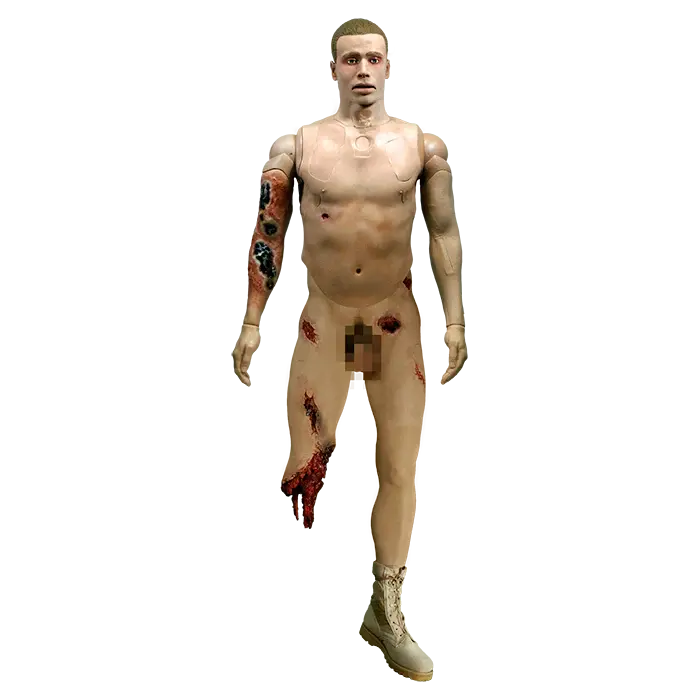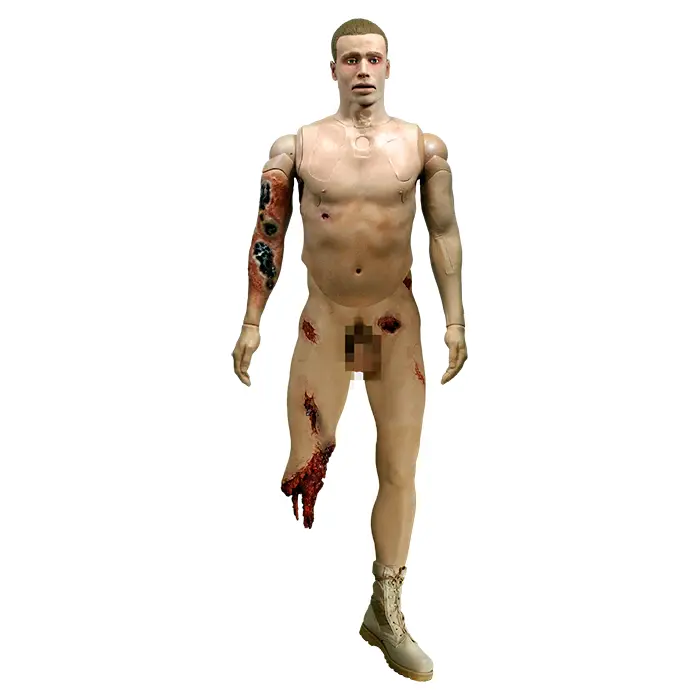WBS-CRU-R - Whole Body Clinical Response - Resuscitate
WBS-CRU-R - Whole Body Clinical Response - Resuscitate
Key Features
- Active breathing with chest rise and fall
- CPR
- ACLS Training
- Subclavian Central Line
- Radial and carotid pulses
- Adjustable light-reactive eyes
- Heart and lung sounds
- Airway management
- Moveable jaw
- Intubation
- Oropharyngeal Airway (OPA)
- Nasopharyngeal Airway (NPA)
- Selectable airway obstruction
- Intubation teeth sensor
- Multiple pulse points
- Adjustable blood pressure (usable with standard BP cuff)
- Cricothyroidotomy
- Simulated tension pneumothorax
- Needle decompression (with sensor and air release)
- IV insertion
- Intraosseous (I/O) infusion
- Two-way audio communication
- Full motion legs
- Autonomous response to treatment
- Packable wound
- Amputation
- Active bleeding & occlusion response
- Pulses
- Tourniquet training
- Intramuscular injection
- Foley catheter insertion
- Simulated wounds
- Crepitus (to cue for crushed pelvic region)
- Remote controlled
- Real-time digital feedback for trainers
Product Details
- Multiple sensors provide trainers/learners with instantaneous feedback for After Action Reporting (AAR) via the Ruggedized Remote Control (RC)
- Flexible jaw with internal tracheal landmarks for orotracheal Intubation; gastric distention resulting from improper intubation
- Heart sounds and breathing with coordinated breath sounds in 4 quadrants
- Palpable radial, carotid, and brachial pulse points
- CPR with sensors to measure compression depth and rate
- ACLS training with programmed megacodes and AAR data/scorecard
- Central Line (subclavian) with a flash cue, ultrasound compatibility, and sensors to monitor placement
- Bilateral infusible intraosseous (I/O) trainers and intramuscular injection sites at the humerus/deltoid
- Realistic, light-reactive eyes that respond to ambient light or can be remotely set to dilated pinpoint, TBI, or fixed/non-responsive
- Blood pressure reading via auscultation or palpation with brachial pulse
- Bilateral chest tube insertion sites with replaceable, multiple-use skin plugs
- Oral airway cavity (with teeth, tongue, and injured tongue) for oropharyngeal intubation (responds to BVM)
- Teeth sensor to detect excessive contact during intubation with a removable section of teeth for airway
- clearance training
- Cricothyroidotomy with larynx with replaceable skin plugs
- Nasal passageways with sensors for nasopharyngeal intubation and user-selectable airway obstruction at the nose or throat to cue for surgical cric
- Infusible IV training site at the arm with flash cue
- Realistic manubrium allows intraosseous (I/O) training with fluid Infusion
- Bilateral needle chest decompression (NCD) training sites (with breathing recovery)
- 2-way communication audio system allows the trainer to speak through the simulator
- Water-resistant
- Easy to clean and maintain after use
- Optional right arms: uninjured, amputated
- (non-bleeding)
- Compatible with Vital Signs Monitor
Remote Controlled with Real-time Sensor Data
All TacMed Simulation high-fidelity simulators are operated by a long-range RC controller, including real-time telemetry to monitor medical interventions. Easy to use, menu-driven software takes only minutes to learn, and sensor data is immediately displayed on the main control screen for quick reference. The display shows key vitals and provides instructors with instant data on the effectiveness of student interventions such as tourniquet application, wound hemostasis, airway intervention, needle decompression, and chest tube placement.
Training Flexibility and Wound Variation
Each WBS system consists of an upper and lower torso that disconnects for easier storage and transportation. When assembled, the simulator functions as a complete human body and can be operated by a single remote control. Injuries, bleeding, and interventions performed (or not performed) affect overall patient health and vitals.
The connection mechanism used to attach upper and lower torsos is standardized across the entire TacMed Simulation portfolio, allowing customers the flexibility to customize their configuration by combining different upper and lower torsos to vary the wounds and features needed for their specific training requirements. The remote-control software can recognize and pair with any TacMed Simulation remote-controlled simulator, providing seamless transition when changing components.
- Quantitative unit
- ks

WBS-CRU-R - Whole Body Clinical Response - Resuscitate




